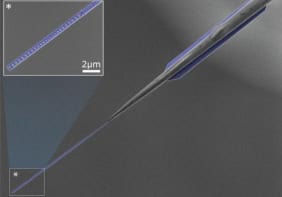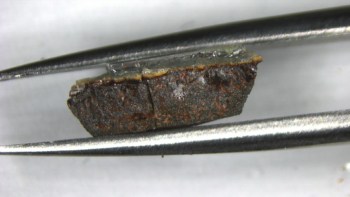
Two teams of researchers in France have measured the rigidity of a material without touching it. The method involves a tiny amount of fluid flowing over the surface of the material and is non-invasive and non-destructive. As such, the technique could be used to achieve nanometre-scale analysis of the elastic properties of thin films or fragile objects such as bubbles or living cells.
A simple way of measuring the rigidity of a body is to touch it with an object that is harder than it. The problem with this technique is that the harder “probe” object can destroy the object of interest, especially if the latter is extremely fragile, such as a living cell. As a result, researchers are keen to develop a less-destructive method. This latest work was done by two teams – one including Samuel Leroy and colleagues at the Laboratoire de Physique de la Matière Condensée et des Nanostructures in Lyon and the other including Frédéric Restagno and colleagues at Laboratoire de Physique des Solides in Paris. The physicists had originally set out to measure softness by blowing on an object with a stream of air and measuring any deformation. However, they dropped that idea because they found that controlling a flow of air is difficult because of the vortexes that can form.
Nanoflows
From that setback came the idea of using a tiny “nanoflow” of fluid, which the researchers have found to be easier to control than air. To make the measurements, the researchers create a very weak and extremely thin flow of liquid between the probe and the material of interest – in one study this was a thin elastomer (rubber) film only several hundreds of nanometres thick – the film is placed on a rigid glass support and immersed in a mixture of water and glycerol. The tiny flow is created by a special technique developed in 2000 by Leroy. The probe is a millimetre-sized Pyrex glass sphere that is attached to a rod, which can be vibrated with great precision. This fine movement is produced via a “piezoelectric ceramic” system, which can control the displacement of the sphere at distances as small as 0.01 nm. It is this tiny glass bead, according to the researchers, that creates the nanoflow.
Distorting films
When the sphere is very close to the material being probed – say about 1 µm away – it pushes the liquid towards the object and so induces very gentle pressure on the surface of the material. If the material is flexible, it is deformed by the pressure. If it is completely rigid, no deformation occurs. Any deformation affects the motion of the sphere and how it vibrates, and this change can be used to calculate the elasticity of the film.
The researchers also used the set-up to measure the rigidity of an array of bubbles – something so fragile that it would be destroyed when touched. By combining this new method with established techniques, such as using “colloidal-probe atomic force microscopy”, the researchers hope to measure the softness of a wide range of materials.
The research is published in Physical Review Letters.



